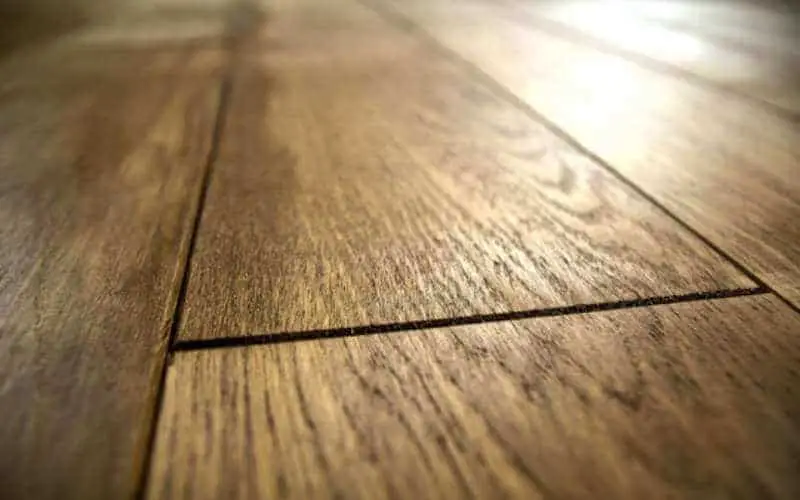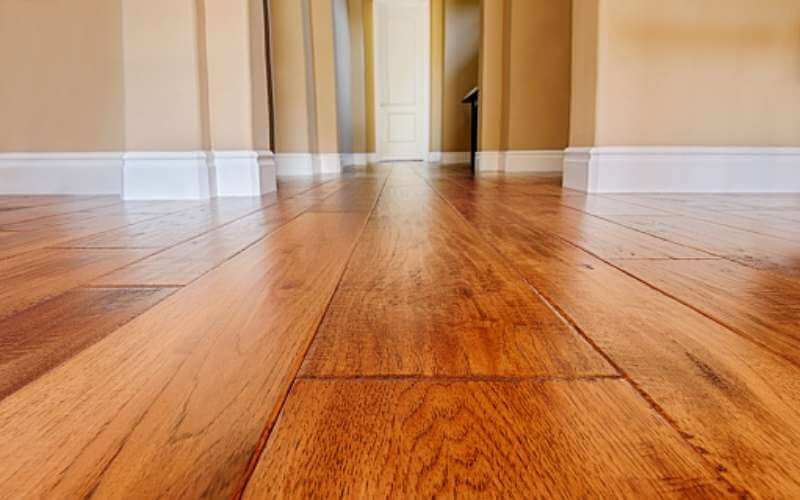Is your hardwood floor separating? Your old tongue-and-groove hardwood floor or wide-plank floors may develop gaps between the boards and separate due to the shrinkage of the wood as it dries out over time and loses its moisture content.
If the floorboards were not tightly laid during installation, it could also cause your hardwood floor to separate. You can fill gaps between hardwood floorboards with wood strips, rope, and wood putty.
They can all be stained to match the floor and enable them to blend in better. Here are ways to fix hardwood floor separating.
How to Fix Separating Hardwood Floors
Table of Contents
1. Using Wood Strips
For this method, you would need a spare floorboard that is ripped cut using a table saw. If you don’t have any floorboard left from the installation, you would need to buy new or salvaged boards that match the species or color of the existing flooring.
Use a measuring tape to determine the width and length of each gap between floorboards. Then rip-cut the wood strips to the measured width.
Use a miter saw or handsaw to cut out strips as needed for the length of the gap you are fixing. It is best to cut the strips from the grooved side of the spare floorboard so that the depth of the piece aligns correctly with the tongue of the existing floorboard.
Next, apply some wood adhesive to both sides of each strip and tap it into place in the gap gently, using a mallet or hammer.
Ensure the strip is securely flush with the adjoining boards. Remove excess glue with a damp cloth and allow it to dry completely.
Level the floor surface by sanding down any high spots in the strips; this should be done carefully, and try to avoid the surrounding finish or boards. To blend the fixed area with the rest of the floor better, you can stain or add a finish to the strips.
2. Using Rope
If you have wide-plank floorboards, you would be dealing with large gaps which can be fixed using a natural-fiber rope.
Rope may have a different appearance than wood, but you can apply matching stain to blend the rope with the floorboards and make the fixed areas much less noticeable. You would need to use natural rope, such as jute or cotton, as synthetic rope cannot absorb stains.
To ensure the ropes adhere securely to the gap, clean it out with a painter’s 5-in-1 tool or flathead screwdriver, remove debris and dirt particles from the gaps carefully. You can go in with a vacuum cleaner to further remove loose debris from the gaps.
Choose a slightly larger rope thicker than the gap and stain it with a wood stain that matches the color of your floorboards. Add the stain to a small bucket and dunk in the rope until it is saturated.
Pull out the rope carefully and allow the excess stain to drip back into the bucket. Spread out the stained rope on clean cardboard and allow it to dry completely.
When the rope is dry, string it out along the gap, you may need to apply some force with the 5-in-1 tool or a putty knife to push the rope into the gap and stop when the rope is flush with or slightly below the wood surface. Cut out excess rope using a sharp utility knife.
3. Using Wood Putty
If your hardwood floor is separating, another way to quickly fix it is by using wood putty. This fix is effective on small, relatively stable gaps, but there’s a slight chance of the gaps reopening, especially during the dry season.
Use a slightly dampened cloth to clean the floorboards on both sides of the gap; before applying a fine bead of wood putty to the gap, use your finger to work the putty down into the gap using circular motions.
Use a putty knife to scrape off excess putty from the wood surface but be careful not to scratch the floor’s finish.
Once the putty is set, use a wet cloth to wipe putty residue from the adjoining boards.
Avoid pulling the putty out of the gap and allow it to dry completely before resuming movements on the floor. For further protection and a better look, you can apply a coating of varnish or urethane.
Causes of Wood Floor Separation
1. Temperature and Moisture Extremes
One of the causes of wood floor separating is temperature. Wood is a natural product that expands and contracts, depending on the moisture content and temperature of the area.
High temperature and high air moisture cause the wood to take in moisture and expand. When the temperature drops and the moisture dries up, the wood shrinks.
This is a natural occurrence in nature, but once the floorboards have been fitted tightly together, the process of expansion and contraction can become an issue and cause great damage to your hardwood floor.
If the boards are expanding and contracting too much, they will either develop unsightly and often draughty gaps; they can also cup or bow due to lack of expansion space.
Both situations can be avoided by ensuring to install your floorboards properly, leaving recommended expansion joints.
2. Acclimatization and Expansion Gaps
Failure to acclimatize the wood floorboards properly before installation can cause the boards to separate and develop gaps.
Read: How long should hardwood floor acclimate
3. Poor Installation
If your floorboards haven’t been securely tapped into place flush against their neighboring board during installation, they may separate and develop gaps over time. Such gaps can be fixed by tightening up the contact of the boards after installation.
Hardwood Floor Separating: Final Thoughts
Is your hardwood floor separating? This article discusses ways to fix it. You can either use wood strips, rope, and wood putty to fill the gap, blend out the fixed area, or apply a coat of stain or finish over the area.
Before dealing with hardwood floor separation, ensure to find out the cause and fix it promptly. This is to avoid the reoccurrence of your hardwood floor separating.


